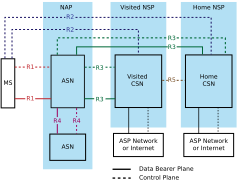
- Image via Wikipedia
WITH Wednesday’s announcement by Verizon Wireless—the largest of America’s four big mobile phone companies—that it will switch on its new 4G (fourth generation) wireless network in 38 metropolitan areas and at 60 domestic airports on December 5th, one out of two wireless phone subscribers in the country will then be able to access the web at speeds unheard of locally but taken for granted elsewhere in the world. The generational change has arrived just in time.
Unfortunately, for the moment, subscribers will not actually be able to speak over the new mobile-phone network. The only way they will be able to use Verizon’s 4G system—hyped as being “up to ten times faster” than the carrier’s existing 3G network—will be via a wireless modem plugged into a laptop. Verizon does not expect to have 4G phones available until next summer at the earliest.
And they are not going to be all that cheap to use, though Verizon’s smartphone users have shown themselves to be more or less impervious to the cost of data plans. The cheapest will add a further $50 a month to the subscription fee for the luxury of downloading or uploading just five gigabytes (little more than the content of a single DVD), with an additional $10 for every gigabyte after that. By all accounts, the days of flat-rate monthly plans are gone for good.
Verizon is not the first mobile-phone company in America to offer 4G services—those capable of download speeds in excess of five megabits per second compared with 3G’s real-world maximum of around 1.4 Mbps. Of the country’s big four wireless carriers, Sprint Nextel’s 4G network was launched two years ago and T-Mobile’s earlier this year. AT&T will start rolling out its own 4G service sometime next year.
So far, three different technologies have emerged to meet the demand. Sprint and its partner, Clearwire, have adopted an internet protocol known as WiMAX—a sort of faster and longer-range version of WiFi. Meanwhile, T-Mobile has been using HSPA+, an enhanced version of a 3G technology called High Speed Packet Access. By contrast, Verizon has adopted LTE (Long Term Evolution), a protocol that has been embraced by telecom companies around the world. AT&T will likewise adopt LTE when it upgrades its existing HSPA+ network.
Technically speaking, none of these three cellular technologies is actually fourth generation in the International Telecommunications Union’s book.
Read more . . .








